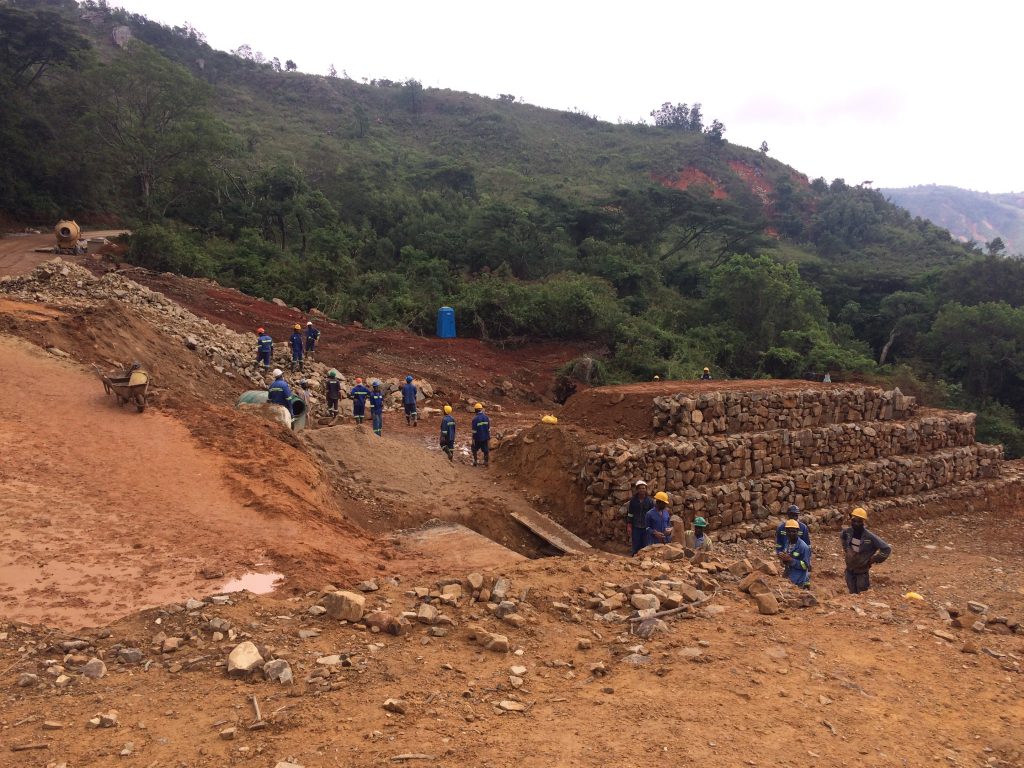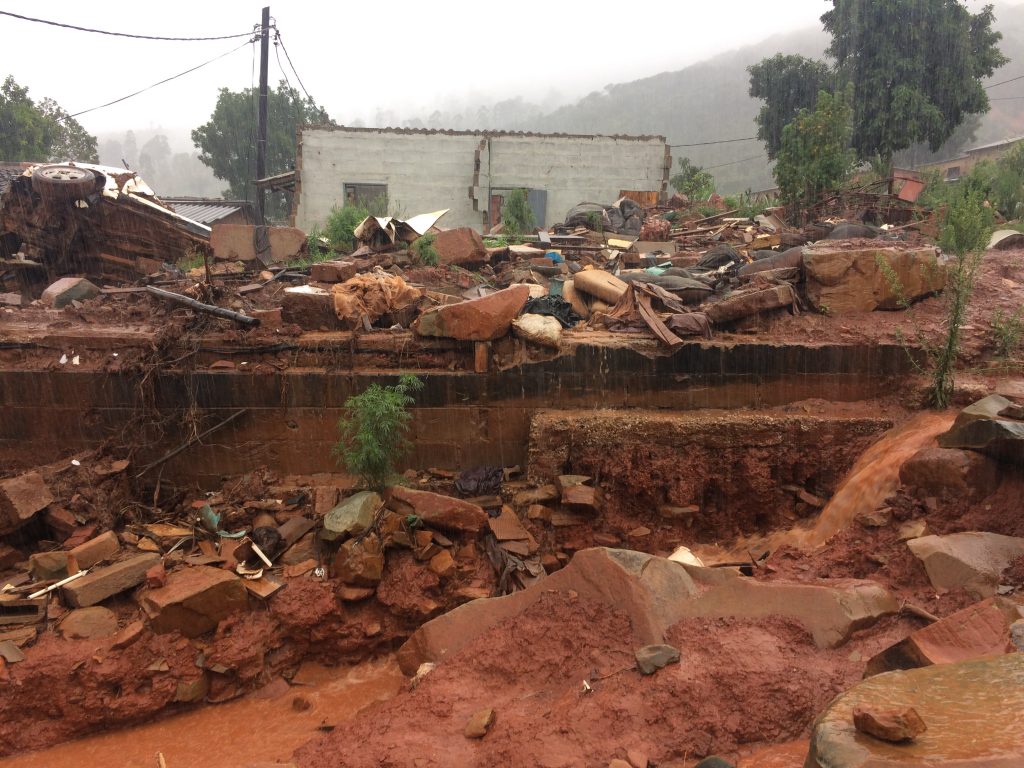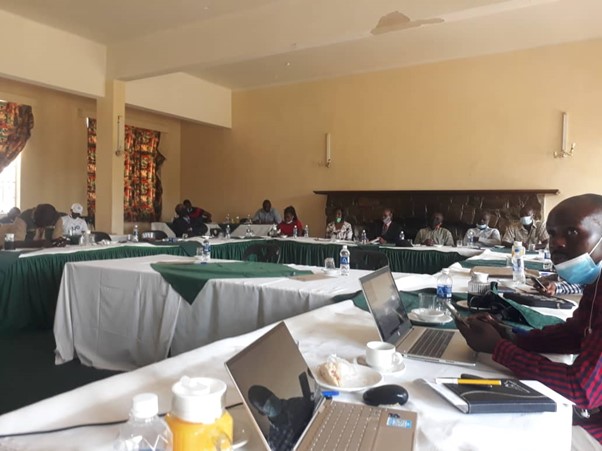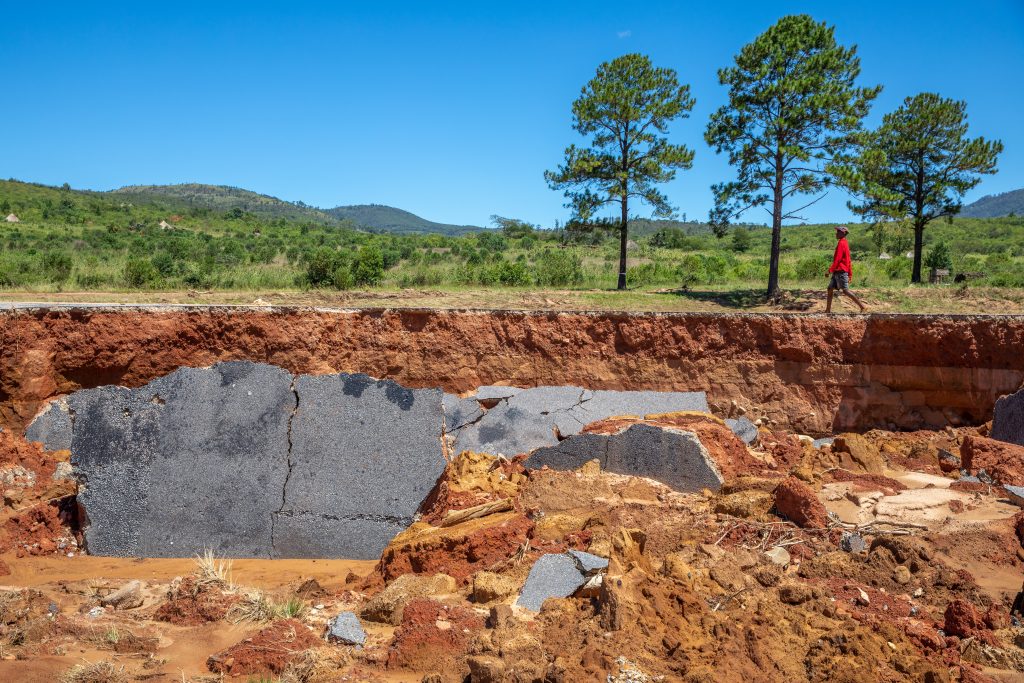Practical Action Zimbabwe is working with communities in Chimanimani to understand and improve their flood resilience. Find out about the role the Zurich Flood Resilience Alliance’s Flood Resilience Measurement for Communities (FRMC) framework and tool is playing in the development of their project.
Why we need to build flood resilience in Zimbabwe
Climate change is a global challenge. Whilst all countries have an increased risk of climate-induced and exacerbated hazards like floods, droughts, storms, cyclones and heatwaves, low-income countries like Zimbabwe are hardest hit by the impacts of these hazards.
A Zurich Flood Resilience Alliance Post Event Review Capability (PERC) study analysing the impacts of the 2019 Cyclones Idai and Kenneth revealed a major humanitarian disaster in southern Malawi, central and northern Mozambique, and eastern Zimbabwe.
High winds, severe flooding, and landslides caused over $2 billion in damages and destruction to homes, critical infrastructure and agriculture, impacted over 3 million people, and caused over 1,300 deaths across all three countries, with many still unaccounted for years later.
The impact of Cyclone Idai on south-eastern Zimbabwe
In Chimanimani District of south-eastern Zimbabwe Cyclone Idai led to 251 deaths, 183 injuries and 354 hospitalizations, while 1,654 people were internally displaced.
The cyclone also resulted in the destruction of over 10 irrigation schemes. This led to the disruption of agricultural activities and rural livelihoods. Over 347km of road networks in the district were rendered unusable for months. This affected people’s access to markets, disrupted their livelihoods and access to health care.

Practical Action Zimbabwe, a member of the Zurich Flood Resilience Alliance
Having learned from the PERC study and seen the impact floods can have on the communities we work with and their ability to make a living, Practical Action Zimbabwe joined the Zurich Flood Resilience Alliance in 2021. As an Alliance member, we will be working in Chimanimani District to increase and improve flood resilience funding, policy, and practice.
At the heart of the work we’re doing is the Flood Resilience Measurement for Communities (FRMC). An approach and tool developed by the Zurich Flood Resilience Alliance to, in partnership with communities and local stakeholders, better understand a specific community’s flood resilience and how it can be enhanced.
The communities we work with
We’re working in 11 Wards in Chimanimani District, located in the south-eastern part of Zimbabwe. The district borders Mozambique in the east, Mutare District in the north, Buhera District in the west, and Chipinge district in the south.
In each of the 11 Wards, we have identified communities made up of two neighbouring villages. The communities we’re working with are Wards 1 (Cashel), 2 (Mhandarume), 3 (Chakohwa), 5 (Rupise), 8 (Nyanyadzi), 9 (Shinja Communal), 13 (Nyahode), 14 (Charter), 20 (Gudyanga), 21 (Ngorima A) and 22 (Ngorima B).
These communities are home to 7,642 households, or 30,568 people, whose flood resilience we are aiming to help strengthen.

How we’ve gone about applying the Flood Resilience Measurement for Communities in Zimbabwe
Induction and requisite training of field workers
To generate evidence about ways in which the selected communities are already resilient to floods, as well as provide a guide to further strengthen this resilience, we are using the FRMC web-based tool guided by the FRMC framework.
We collected baseline data (T0 study) in the web-based tool through trained Field Workers for each respective community. The Field Workers undertook training that not only exposed them to the FRMC tool and approach but also to critical concepts of resilience, disaster risk management (DRM) and ethics in evidence generation.
Sensitization of provincial, district, and ward level authorities
Practical Action targeted key stakeholders at the provincial, district and ward levels to raise awareness of the FRMC and advocate for its usefulness. This included preparing documents for project authorization, seeking clearance from provincial and district authorities, as well as developing a Memorandum of Understanding with the local Rural District Council, which spelled out areas of cooperation between Practical Action and Chimanimani Rural District Council during the implementation of the flood resilience project.
FRMC project launch at district, ward and community levels
We conducted a series of project launch events at district, ward, and community levels. We targeted local leaders and representatives of various stakeholder groups such as women, youth, farmers, and the business community. The objectives of the flood resilience project were explained to stakeholders, including the expected impacts of the project.
T0 study data collection, analysis and results grading
The trained Field Workers were deployed in all 11 communities to collect data on the 44 sources of resilience which the approach is based on using the FRMC mobile app. This was followed by analysis and grading of results by the team at Practical Action. The results showed that communities are largely strong on social, human and natural capitals, while physical and financial capitals are weaker.
Results sharing and intervention planning
The FRMC results were shared with the communities to help them appreciate their current level of flood resilience. The communities then identified and prioritized interventions that can increase their resilience, if implemented. They range from ‘software’ such as first aid training to ‘hardware’ ones such as construction of footbridges.
In the communities we are working with there are no people with first aid knowledge. We want to build the capacity of communities and provide them with skills on how to render first aid in times of disasters. Trained community members can provide timely assistance to those injured while waiting for external aid, which is often delayed as a result of disruptions to road infrastructure. Construction of footbridges aid evacuation and also facilitate access to the community during flooding.
High-level stakeholder engagement
We convened a high-level workshop in December 2021, which brought together key stakeholders at the district level. The purpose of the meeting was to share findings of the T0 study and get their input on the interventions prioritized by communities.

Implementation of prioritized interventions
Implementation of prioritized interventions began in January 2022 in two communities of Cashel (Ward 1 and Ngorima A (Ward 21). Implementation will then be scaled up in other wards throughout the year.
Challenges we faced and lessons we learned
The use of the FRMC helps give the project an anticipatory approach. In partnership with community members and other local stakeholders it measures current resilience to flood disasters and then works towards improving it. From the T0 study analysis, the project has managed to synthesise lessons in the context of the 11 communities:
- Risk reduction measures and resilience building are likely to be effective when employed in an integrated manner including reducing vulnerability.
- The T0 shows that both structural and non-structural measures for risk reduction are key in resilience building.
- Engaging local people builds ownership.
- Livelihood recovery is key to resilience building.
What’s next for resilience building in Zimbabwe

Flood resilience needs to be mainstreamed into broader community risk management planning to account for instances where many shocks might occur simultaneously or shortly after one another for instance floods being followed by COVID-19 pandemic and a potential drought as in the case of Chimanimani District in Zimbabwe.
We’re hoping that others can learn from our work and apply similar, holistic and participatory approaches to build resilience to climate related natural hazards. If you think the Flood Resilience Measurement for Communities might be the right approach for your work, have a look at this brochure or get in touch for more information.

Comments